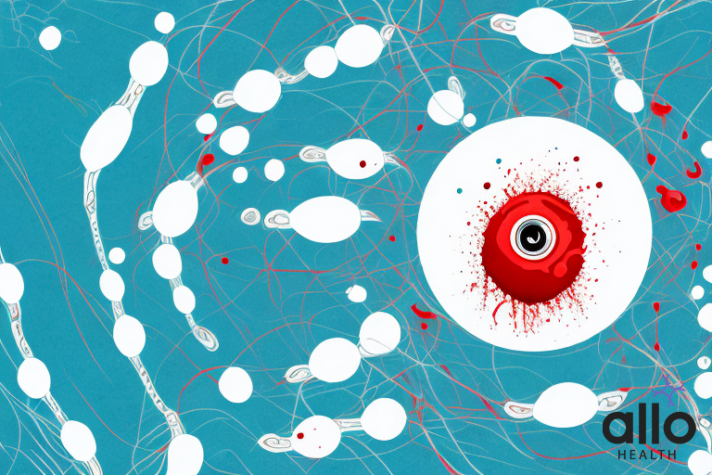How Much Blood Is Equal to One Drop of Sperm?

Allo Health is dedicated to personalized well-being, offering support and trusted information tailored to individual health goals. The platform emphasizes human-generated content, led by a distinguished medical team of experts, including physicians and sexual health specialists. Their commitment to credibility involves rigorous fact-checking, authoritative research, and continuous updates to ensure accurate, up-to-date information. Allo Health's unique approach goes beyond conventional platforms, providing expert-led insights and a continuous commitment to excellence, with user feedback playing a crucial role in shaping the platform's authoritative voice.

Dr. Aditi completed her undergraduate medical education at AJIMS, Mangalore, after which she worked in multi-speciality hospitals with COVID patients and in the Pain and Palliative medicine department. Driven by her experiences, she developed a keen interest in psychiatry. Dr. Aditi believes that mental health is just as, if not more important, than physical health.
Why This Was Upated?
Our experts continually monitor the health and wellness space, and we update our articles when new information became available.
Updated on 09 April, 2024
- Article was updated as part of our commitment to diversity, equity, and inclusion.

"The following blog article provides general information and insights on various topics. However, it is important to note that the information presented is not intended as professional advice in any specific field or area. The content of this blog is for general educational and informational purposes only.
Book consultation
The content should not be interpreted as endorsement, recommendation, or guarantee of any product, service, or information mentioned. Readers are solely responsible for the decisions and actions they take based on the information provided in this blog. It is essential to exercise individual judgment, critical thinking, and personal responsibility when applying or implementing any information or suggestions discussed in the blog."
Semen is a complex and vital fluid produced by the male reproductive system. During ejaculation, it is released from the penis, playing a crucial role in human reproduction. Comprising a variety of fluids and cells, semen provides essential support and nourishment to sperm as they embark on their journey towards potential fertilization.
In this article, we will delve into the intricacies of semen composition, its significance in the human body, and debunk any misconceptions surrounding its properties.
Understanding the unique characteristics of semen is fundamental to shedding light on its role in human fertility and promoting accurate knowledge about reproductive health.
What is Semen and What Does It Consist Of?
Semen is a whitish-gray fluid released during ejaculation, containing sperm cells, secretions from various glands, and nutrients to support sperm viability.
The composition of semen is a blend of fluids originating from the testicles, seminal vesicles, prostate gland, and Cowper’s gland.
These components work together to facilitate sperm transport, provide nourishment, and maintain a conducive environment for fertilization.
Debunking the Myth: Comparing Semen to Blood
There is a common misconception that one drop of semen is equivalent to blood, often leading to speculations about its scarcity and potential health implications. Semen and blood are entirely distinct substances, with different purposes and compositions. While blood is a vital fluid responsible for carrying oxygen and nutrients throughout the body, semen serves the specific function of facilitating reproduction.
The Role of Semen in Human Reproduction
The primary function of semen is to transport sperm cells from the male reproductive system into the female reproductive tract during sexual intercourse. Sperm cells, the microscopic male gametes, are carried within the fluid medium of semen. Once inside the female reproductive system, sperm cells embark on a journey to fertilize a mature egg, potentially leading to the creation of a new life.
Semen Composition: Glands and Secretions

- Testicles: The testicles, or testes, are responsible for producing sperm cells through a process called spermatogenesis.
- Seminal Vesicles: These glands contribute the majority of fluid to semen, providing fructose (a sugar) as an energy source for sperm, as well as prostaglandins that aid in sperm motility.
- Prostate Gland: The prostate gland secretes a milky, alkaline fluid that enhances sperm survival in the mildly acidic environment of the vagina.
- Cowper’s Gland: Also known as the bulbourethral gland, Cowper’s gland produces a clear, lubricating fluid that precedes semen during sexual arousal.
Seeking Professional Advice
For accurate information about semen, its composition, and any concerns related to reproductive health, it is essential to consult a qualified health provider. They can provide personalized guidance and address individual queries to ensure a comprehensive understanding of reproductive health.
Final Words:
- Semen is a vital fluid produced by the male reproductive system, playing a crucial role in human reproduction.
- It contains sperm cells, secretions from various glands, and nutrients to support sperm viability.
- Semen’s primary function is to transport sperm from the male to the female reproductive tract during sexual intercourse.
- One drop of semen is not equivalent to blood, as they are entirely distinct substances with different purposes and compositions.
- Seeking advice from a qualified health provider is essential for accurate information about semen and reproductive health.
Frequently Asked Questions
Q: One drop of sperm is equal to how much blood?
A: One drop of sperm is not equivalent to any specific amount of blood. Sperm and blood are entirely different substances with distinct functions and compositions in the human body.
Q: How much semen is typically ejaculated during sexual intercourse?
A: On average, a single ejaculation releases about 1.5 to 5 milliliters of semen, containing millions of sperm cells.
Q: Does semen solely consist of sperm cells?
A: No, semen contains various components, including sperm cells, seminal fluid from the seminal vesicles, prostatic fluid, and pre-ejaculate from Cowper’s gland.






































